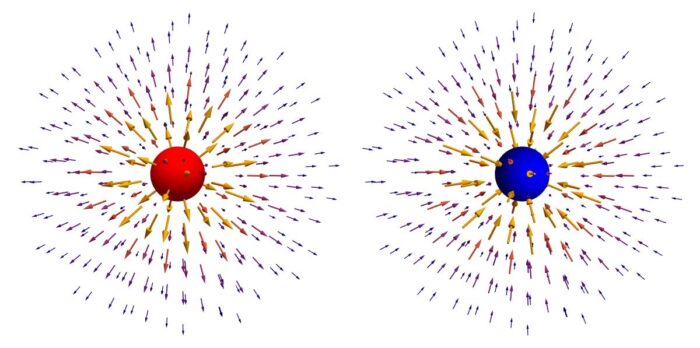What is Electric Charge?
Electric charge is one property of matter that affects an object’s behavior during interactions with other objects. Particles that have a non-zero charge will interact with other particles with a non-zero charge in measurable and predictable ways.
The property of charge originates at the sub-atomic level with the proton and electron. As far as any experiments have ever shown, protons and electrons have exactly the same magnitude of charge. However, they do have a distinguishing attribute we describe mathematically with plus and minus signs. Charge magnitude comes in values that are always integer multiples of 1.6 x 10-19 C. The rules of the universe require that identically signed charges repel and oppositely signed charges attract. We don’t necessarily know why they behave this way – we’ve just observed it and then created a mathematical model that fits the behavior.
For mathematical convenience, protons are defined to possess a positive charge p = +1.6 x 10-19 C and electrons are defined to possess a negative charge[2] e– = –1.6 x 10-19 C.
Inertia and Forces
The rules of the universe also require that all objects move with constant velocity (straight lines at a constant speed.) The only way to change the velocity (speed and/or direction) of an object is through interaction with another object.
Electric Force and Coulomb’s Law
One such interaction is the electric force.
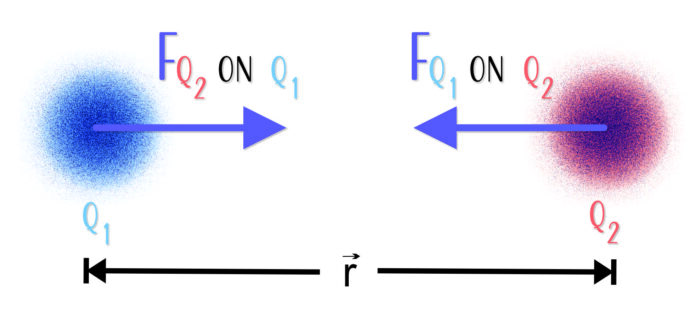
The magnitude of the force between any two point charges is proportional to the product of the particles’ electric charge q and inversely proportional to the square of the distance between the particles →r. Charge comes in multiples of 1.6 x 10-19 C and is carried on protons and electrons[3]. The direction of force lies along a straight line r that joins the two objects.
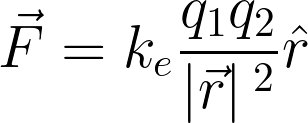
The constant of proportionality is:

The equation is known as Coulomb’s law. Every experiment performed has shown that Coulomb’s law is always true. We know that two charges will interact and experience a force in a direction along a line that joins the two points.
Three or More Charged Objects
By the time you investigate three charges, you usually have to keep track of the result of forces in two dimensions.
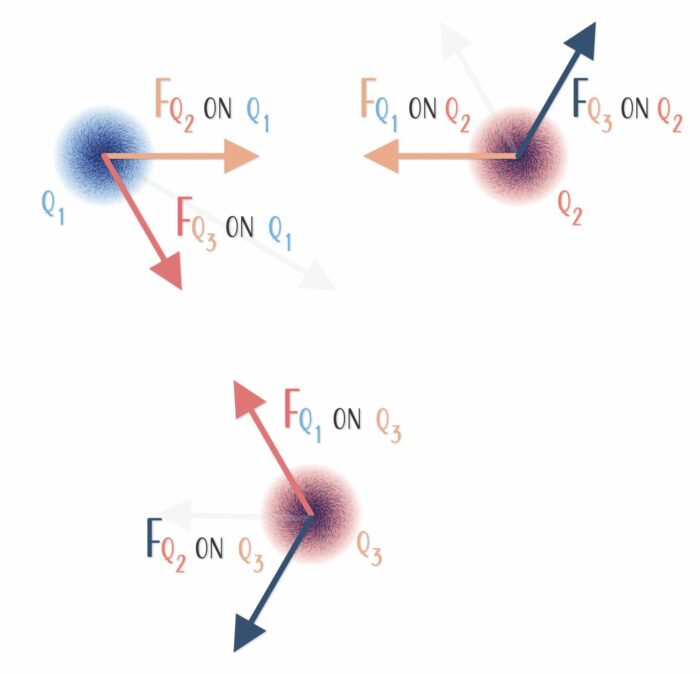
And with four charges comes the likelihood of keeping track of forces in three dimensions.
The Superposition Principle
Determining the effects of multiple charges is relatively simple. The resulting force is the vector sum of all the individual forces on a given charge. ΣF = F1 + F2 + … + Fn. Superposition in this context simply means that each interaction’s contribution is independent of all other interactions’ contributions.
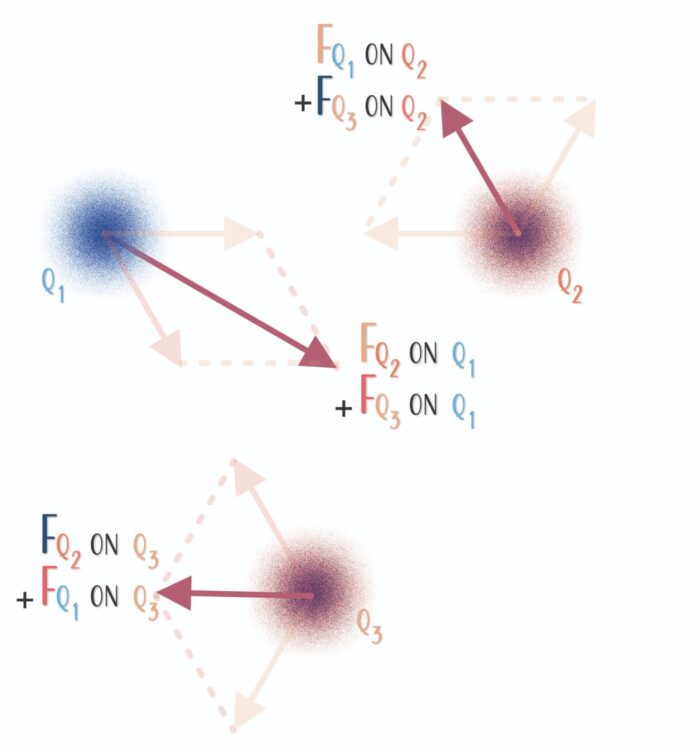
That might seem like a logistic nightmare because it is rare to find two point-charges alone in nature. Usually, where you find two charges, you’ll find several hundred thousand billion more within a centimeter radius. But do you even need to consider every charge in a centimeter radius? How about a micrometer radius? Or a nanometer radius?
Situations involving multiple charges can get complicated quickly.

